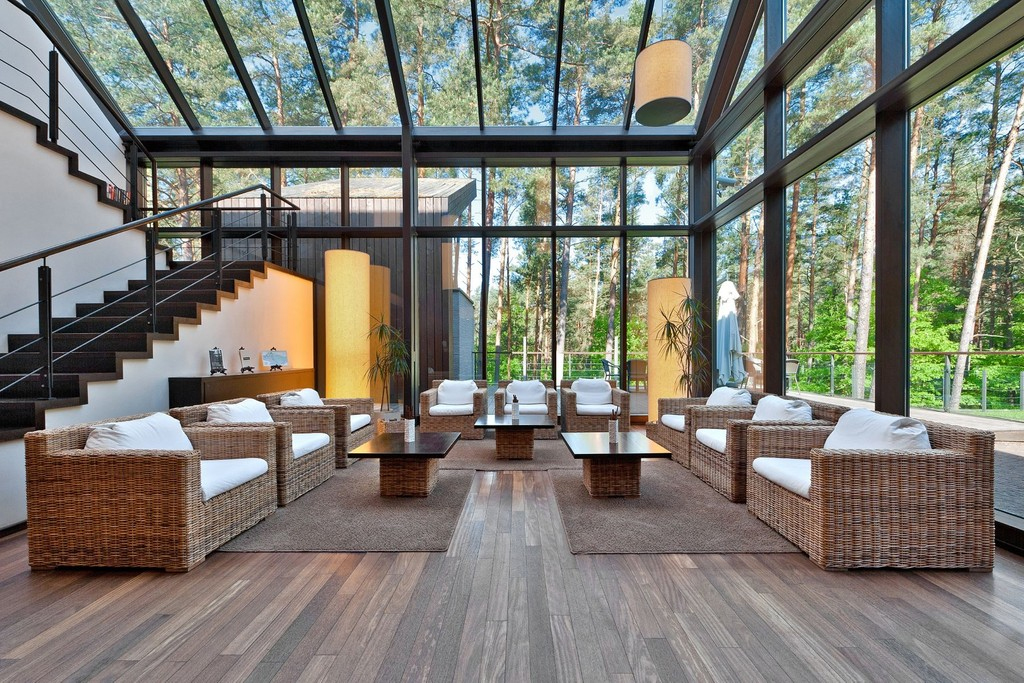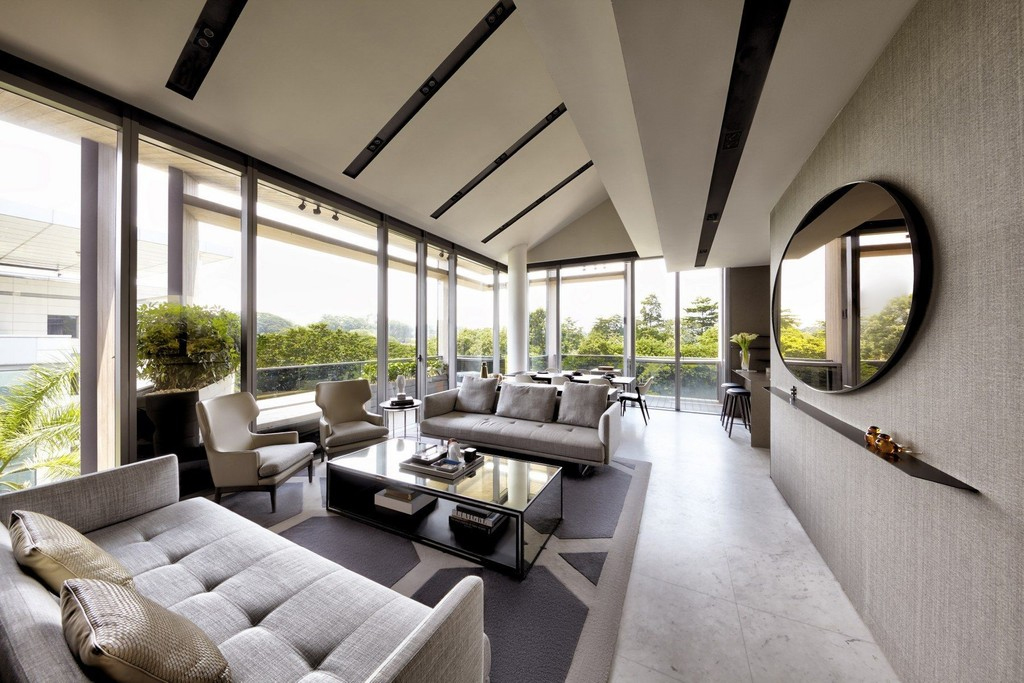It’s been a while since luxury was synonymous with excess. Today, what matters most to high-end consumers is that their purchases have a larger positive impact on the world, and provide them with a meaningful personal experience. Brands are looking beyond mere material opulence, and thinking about how to create a genuine sense of novelty, authenticity, and global stewardship — socially and environmentally — through the goods and services they provide.
These social responsibility and experiential purchases trends are alive and well in the world of luxury real estate: homebuyers want properties that complement their individual lifestyles while minimizing their ecological impact, and they’re connecting with agents and listings through inspirational content and storytelling on social media.
Yet the real estate market is only one piece of the luxury puzzle. Time and time again, the most successful agents are able to build relationships and close deals because they understand the world their clients live in.
Here are three macro trends that are shaping today’s luxury market — and tomorrow’s.
1. Conscious consumption

Baltic Sotheby’s International Realty
Luxury consumers tend to be well-informed, and the majority are concerned about climate change: 56% of those 55 and older, 62% of those between 35 and 54 years old, and 70% of 18 to 34-year-olds. Moreover, that last group — millennials and Generation Z — will constitute as much as 40% of the luxury market by 2025.
This emerging demographic cares more than its predecessors about ethical and transparent production processes, philanthropic brand purposes, and personalized experiences. And 89% are willing to spend more on companies they consider ethical and sustainable.
It’s no surprise, then, to see leading fashion brands embracing environmental awareness. Stella McCartney’s “World of Sustainability” platform is just one high-profile example of how brands are leading the conversation on conservation. Others are sourcing premium materials for products, and creating distinctive, eco-friendly packaging that lends itself to a unique — and highly Instragrammable — unboxing experience for social media-savvy consumers without creating unnecessary waste.
For agents, this means that every aspect of your engagement with a client should be considered through the lens of transparency and sustainability. Has your business made strides to become more efficient and less wasteful? Do you have a clearly defined set of ethics? Give these initiatives pride of place on your website and social media channels so that clients can identify you by your values. And consider your interactive offerings: make every open house an experience, whether that’s laying out apéritifs at a remarkable property at sunset or sharing a virtual reality showing with a remote client. Your clients may not be unboxing a home, but the experience should impart joy nonetheless.
2. Purposeful collaboration
Individuality and creativity are of central importance to the emerging affluent consumer, so it comes as no surprise that exclusive collaborations are still a mainstay in the luxury market. However, their magic could be starting to wear off: after all, these collaborations — and the buzz they generate — often signify social status over social engagement. Without a fresh, forward-thinking take, such partnerships could fall out of favor.
In the 2020s, expect to see leading luxury brands keeping the collaboration ethos alive by embarking on innovative, cooperative projects that resonate with the values of affluent consumers while taking a longer view of social and environmental issues — subverting and exceeding their expectations as a result.
Think about the collaborations that would feel authentic to your business. Is there a leading renewable energy company in your market you could partner with on a project? A notable designer? Without going overboard, seek out partnerships that make sense from a brand perspective: collaboration should feel in step with the work you’re already doing while exposing your initiatives to a fresh audience.
3. In-person touchpoints supported by digital tools

List Sotheby’s International Realty
A major factor in the growth of the global luxury market has been a year-over-year increase in online sales. And that’s only going to get stronger as millennials and Generation Z drive even greater engagement on digital channels. Today, around 10% of luxury sales take place through ecommerce; by 2025, that’s projected to be 25% — from one in 10 purchases to one in four.
In response, brands are more focused than ever on creating “phygital” touchpoints that merge the physical and digital worlds into a frictionless, omnichannel experience. Data analytics, facial recognition, and Internet of Things (IoT) sensors are just a few of the technologies that will help companies build more complete customer profiles, providing adaptive, hyper-personalized service while also enabling consumers to connect more deeply with their favorite brands.
Agents will be familiar with balancing digital and in-person customer interactions. Whether through virtual reality tours that enable potential buyers to visually inhabit a listing, or the rise of social media as a way for agents to connect personally and professionally with clients while positioning themselves as industry experts and lifestyle influencers, digital is on the rise in the luxury real estate space. But it doesn’t replace the personal touch. Customer relationship management (CRM) systems leverage data analytics to keep agents informed of their clients’ needs, preferences, and milestones, reminding them when to reach out to clients and why. Personalized service has long been a central pillar of luxury real estate, and digital tools are making it even easier for agents to reach out in person.
The merging of online and real-world experiences, along with the aforementioned trends in luxury, provide the background context in which today’s luxury buyers live and work — and it sets the tone for how they purchase homes as well. Whether it’s marketing materials that grab attention or listings more appealingly designed for social, agents should be thinking about how to engage with clients who are already attuned to the cutting edge of luxury.
About Sotheby’s International Realty
Sotheby’s International Realty was founded in 1976 as a real estate service for discerning clients of Sotheby’s auction house. Today, the company’s global footprint spans 990 offices located in 72 countries and territories worldwide, including 43 company-owned brokerage offices in key metropolitan and resort markets. In February 2004, Realogy entered into a long-term strategic alliance with Sotheby’s, the operator of the auction house. The agreement provided for the licensing of the Sotheby’s International Realty name and the development of a franchise system. The franchise system is comprised of an affiliate network, where each office is independently owned and operated. Sotheby’s International Realty supports its affiliates and agents with a host of operational, marketing, recruiting, educational and business development resources. Affiliates and agents also benefit from an association with the venerable Sotheby’s auction house, established in 1744. For more information, visit www.sothebysrealty.com.
The affiliate network is operated by Sotheby’s International Realty Affiliates LLC, and the company owned brokerages are operated by Sotheby’s International Realty, Inc. Both entities are subsidiaries of Realogy Holdings Corp. (NYSE: RLGY) a global leader in real estate franchising and provider of real estate brokerage, relocation and settlement services. Sotheby’s International Realty Affiliates LLC and Sotheby’s International Realty Inc., both fully support the principles of the Fair Housing Act and the Equal Opportunity Act.
Source: click here
















